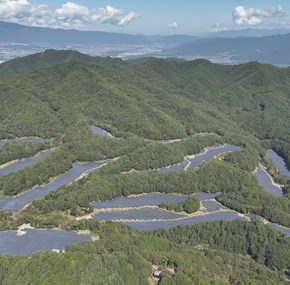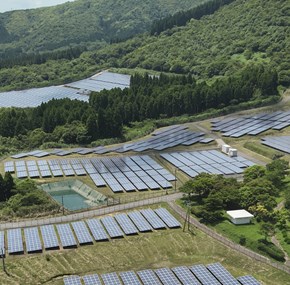How earthquakes are changing the Dutch energy system
In a global context, the earthquake that hit the Dutch area of Groningen on January 8th, 2018 was little more than a tremor. The earthquake was measured at 3.4 on the Richter scale and apart from reports of buildings shaking and creaking, police received few reports of damages.
On a national scale however, the earthquake was the third largest on record, and especially worrying to locals; it was the sixth such earthquake to hit the area within the same month. The earthquake’s epicenter was in the village of Zeerijp, near Loppersum in the northern part of the Netherlands.
- Groningen sits on top of a huge gas field. When it was discovered in 1959, it was the largest known natural gas field in the world. Ever since that time, it has been the primary source of Dutch energy, explains Heide Ehlert-Jürgensen, trade attaché at the Embassy of Denmark in the Netherlands. About 90% of Dutch households are connected to the gas grid.
But there are signs that the gas adventure is starting to turn sour.
- The earthquakes in the region have become more and more frequent in recent years as a result of the extraction of natural gas from the underground. Public pressure is mounting to put an end to the country’s dependence on natural gas, says Heide Ehlert-Jürgensen.
But filling the hole left by natural gas in the energy system will not be easy.
A hole in the national budget
For many decades, the natural gas fields of Groningen have not only been a source of energy, but also a source of national pride.
- Historically, natural gas has provided Dutch society with cheap and reliable energy, as well as a very steady income to the national budget. Only about half of the extracted natural gas has been used domestically, while the rest has been exported to countries such as France or Germany, explains Heide Ehlert-Jürgensen.
The contract for extracting the natural gas from Groningen’s rich gas deposits has been awarded to NAM - a joint venture between Royal Dutch Shell and ExxonMobil.
But the frequency of seismic events in the area has increased in recent years, and so has political pressure to cut the Netherland’s dependency on its underground wealth.
- The government has announced its intention to gradually phase out natural gas extraction before 2030. This means that the Netherlands will have to completely transform its energy system in the coming decade, says Heide Ehlert-Jürgensen.
A gigantic shift towards renewables
The Groningen gas fields are also key to understanding why the Dutch have been relatively slow to develop their renewable energy production.
In 2016, only 6% of the country’s energy came from renewable energy sources – 4% from wind and 2% from solar. This is one of the lowest shares of renewable energy production among EU countries and places the Netherlands far from the common EU-wide target of 20% renewable energy by 2020.
No doubt, the abundance of natural gas has led to a degree of complacency in the Netherlands. But the Dutch government has committed itself to ending this era of complacency.
It has announced its intention to reach a target of 14% renewable energy by 2020 and is stepping up efforts to transform its energy system. Through national SDE+ auctions (Stimulation of Sustainable Energy Production), the Netherlands is offering a greater financial incentive to developers via Power Purchase Agreements (PPAs).
Read our article on the European countries’ different support schemes for renewable energy
Challenges ahead
So far, the transition to a new energy system has broad political backing, and both wind, solar and other renewable energy projects are under development in the Netherlands. But a number of challenges and opportunities lie ahead:
- The Netherlands is simultaneously investing in renewable energy, energy efficiency and retrofitting of existing buildings. That is putting a tremendous strain on the available workforce. One of the greatest obstacles may not be how to change the energy system to more renewable energy, but how to find qualified workers to build the projects, says Heide Ehlert-Jürgensen.
No doubt, the Groningen gas field has caused a national political hangover but the country’s politicians are moving rapidly to rebuild public trust.
- A very broad political majority has proposed an ambitious climate and energy plan for the Netherlands. In developing the policy, the government has aimed at building broad societal consensus by following the traditional Dutch legislative process of including experts from sectors like transportation, agriculture, industry, buildings and electricity. This means including representatives from various organizations. Employers’ organizations, trade unions, environmental NGOs and other stakeholders actively take part in the consensus building dialogue (so called Climate Agreement) which prepare the Climate Act, she says.
The proposal for The Climate Act will now undergo political negotiations and is expected to be adopted by 2019. The proposed law states that the Netherlands will have to reduce its CO2 emissions by 49% before 2030 and by 95% before 2050.
You can read Obton CEO Anders Marcus’ views on the role that solar energy will play in the Dutch energy transformation here.






